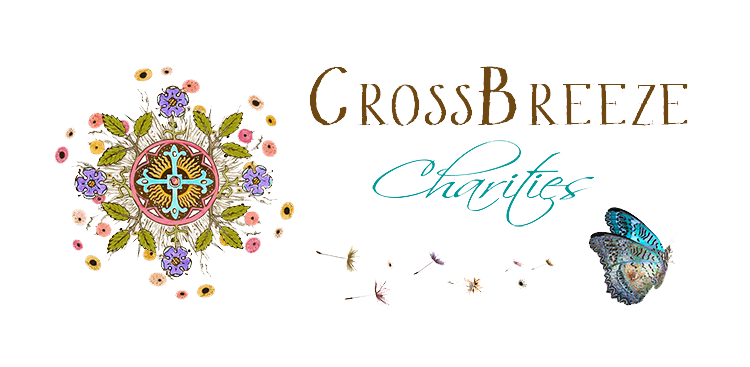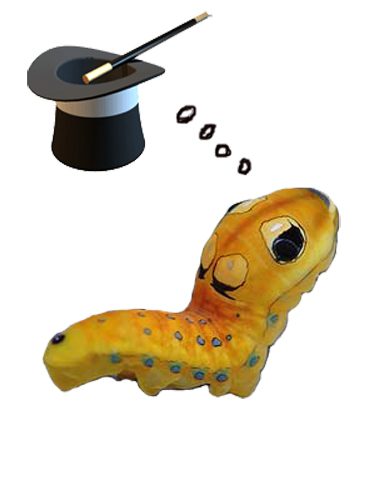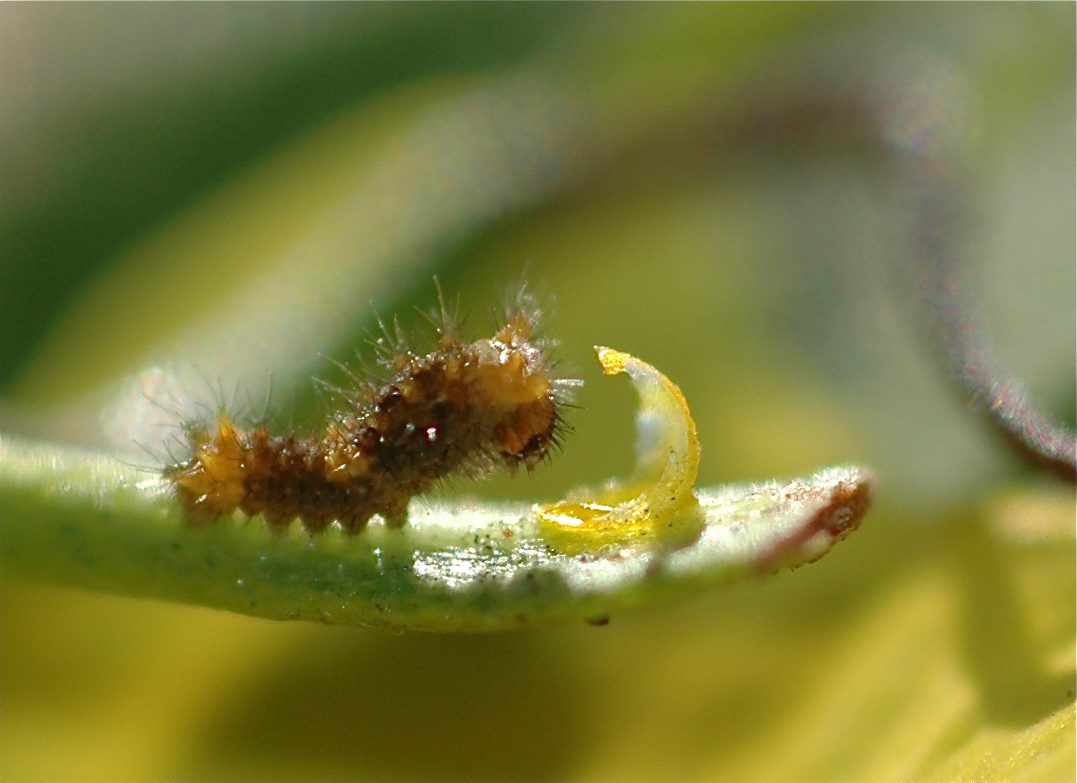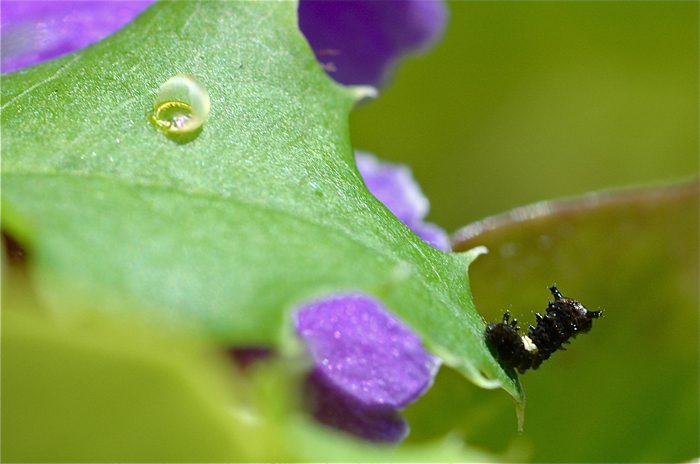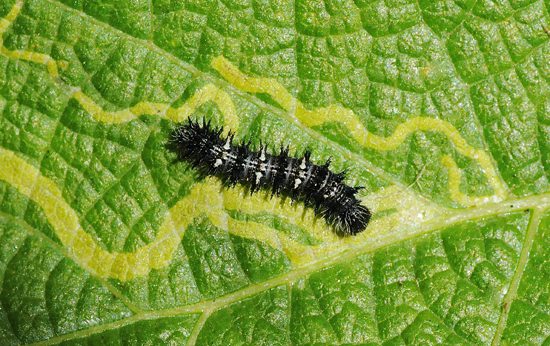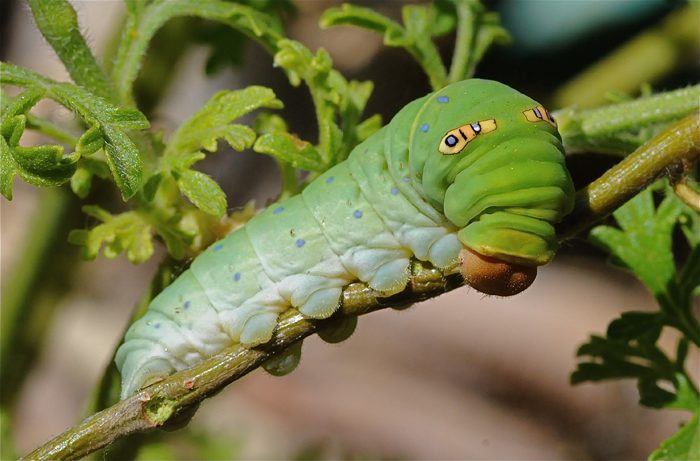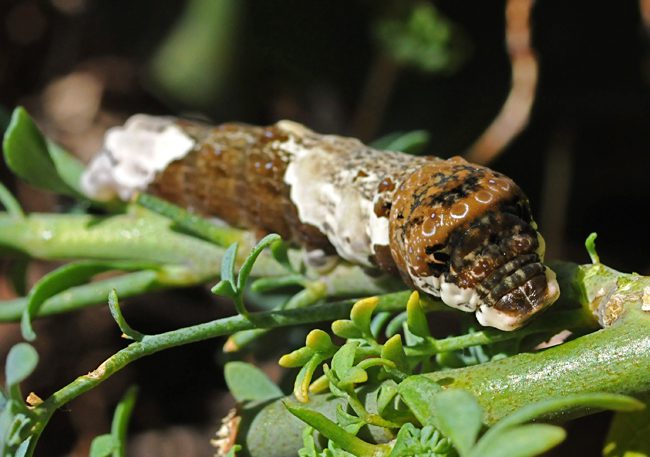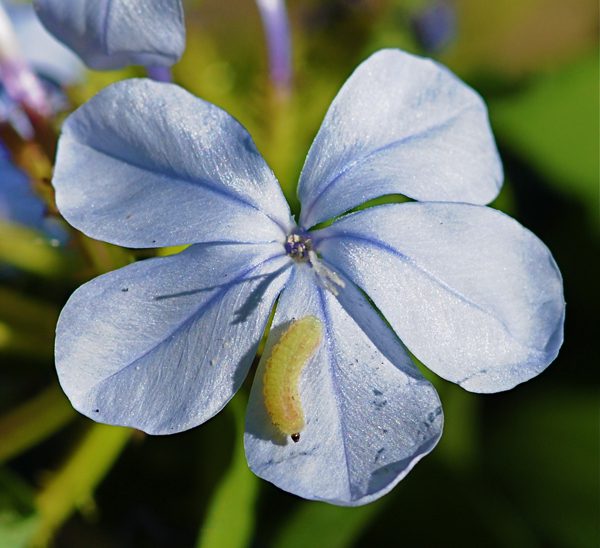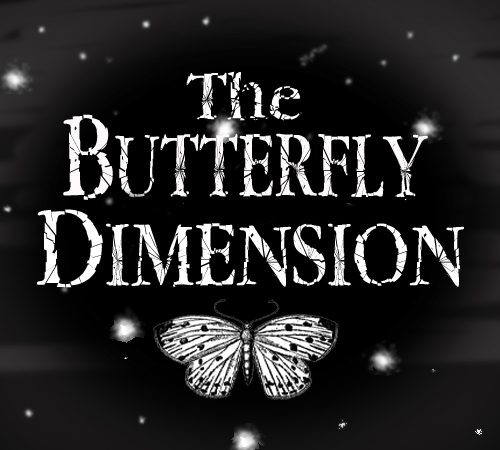
Caterpillar
— Enter the Butterfly Dimension —
Master magician, munching to and fro, a caterpillar works illusions til’ the end of his show ~K. D’Angelo
Caterpillar
Most often, when an egg begins to darken in color, a caterpillar is ready to emerge. Just the size of a dash or a comma, this tiny crawler enters the world by eating its way out of its shell.
With all major body parts intact from the onset, this miniature muncher is ready and able to do what it does best. Eat! With a hardened head full of mandibles or primitive teeth, 6 simple eyes, usually located by the mouth (where they are most needed) and 8 pairs of legs (3 pairs of true legs & 5 pairs of false or velcro type prolegs), a caterpillar is equipped with all it needs to be the “Voracious Eating Machine” that Mother Nature intended.
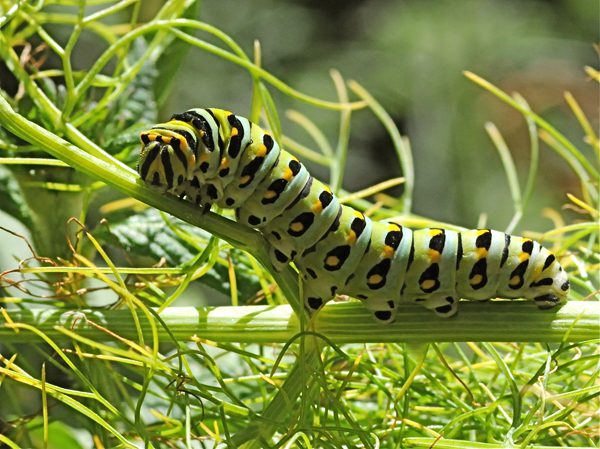
It is thought that caterpillars consume more vegetation than all other insects combined. In fact, a typical caterpillar gains over 3,000 times its body weight. In human terms this would be like a 10 lb. baby becoming a 3,000 lb. adult.
No doubt Mother Nature designed caterpillars to be efficient eaters, she did not, however, design them to be efficient warriors. A newly emerged caterpillar faces all the same dangers it did as an egg and more.
The larger and more mobile a caterpillar becomes, the more visible and tempting it is to potential predators. Newly interested parties including birds, lizards and spiders are among the large list of dangers a caterpillar can face. Such luxuries as claws, beaks and venom are not at a caterpillar’s disposal. Nor can a caterpillar scamper, hop or fly away quickly from a perilous situation. Fortunately, however, over time these amazing creatures have adopted and learned to survive despite the incredible challenges they face each day.
Warriors? No, caterpillars are not warriors! I would like to think of some of them as munching magicians, sly masters of metamorphosis and illusion. Camouflage and body language are just some of the behaviors caterpillars use to create their defensive magic.
Some caterpillars choose to look like a vein in a leaf, while others go for the bird-dropping look. Better yet, why not fool your audience entirely by making them think you are a green snake with large daunting eyes, and then pop out orange glands, which emits a fool odor. Whatever your method, hopefully your show will be a success and the threatening predator will depart.
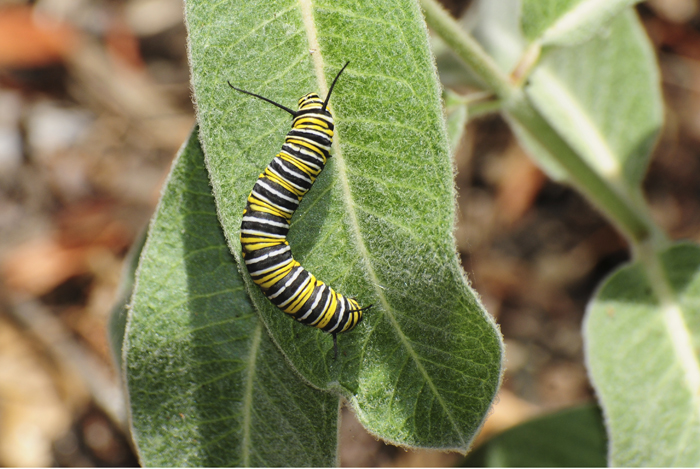
For some species, such as the Monarch, drama is not an option. Eating toxic plants and displaying bold warning colors of yellow, black and white seem to work well enough to keep unwanted predators away.
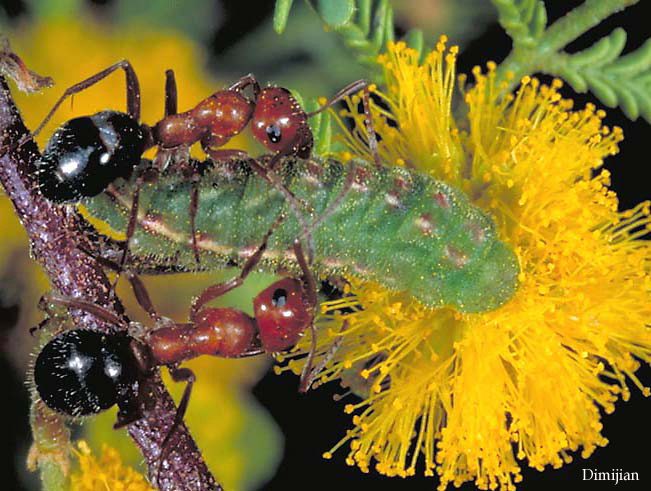
Other caterpillars, up to 20% of them, have opted for a “networking” solution. In many cases, caterpillars are protected by ants. This is a unique relationship where, in exchange for a sugary secretion, which the caterpillar produces, the ants provide protection from predators and in some situations they also offer shelter for eggs and chrysalises.
caterpillars.com… Caterpillar seeks Ant for protection. Will provide “Sweet Treat” to all who qualify!
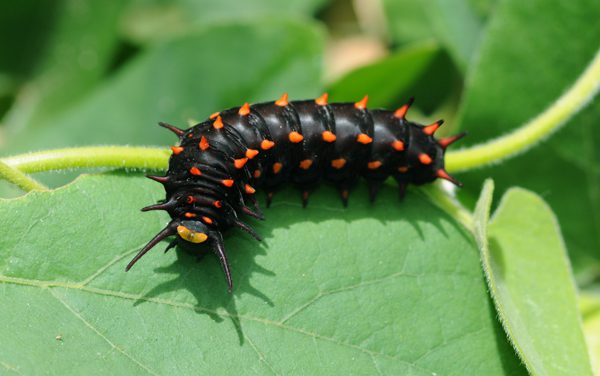
When all else fails and networking or camouflage just doesn’t’t cut it, most caterpillars resort to a variety of behaviors, which may or may not be effective against their foe. A few more tricks caterpillars pull out of their hats are to feed at night or on the underside of a leaf, clip off the leaf you have munched on and tidy up your frass or droppings, maybe no one will notice your around. In extreme cases, depending on your individual talent, you could also hunch, rear, wag back and forth, lung out, or vomit a toxic green liquid, maybe the predator will leave?
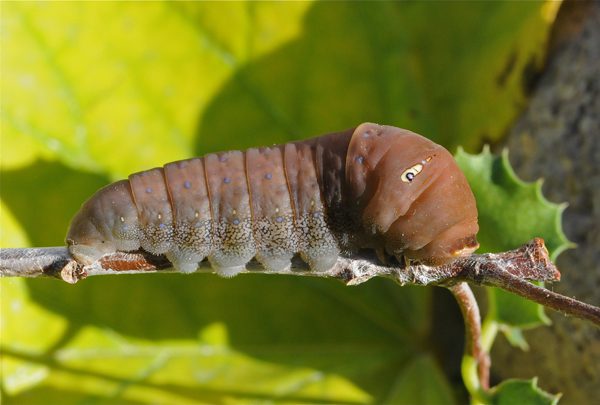
If you are really gifted, and the situation is dire, you could use your silken line to drop off the edge of a leaf and evade your enemy (you can’t be to careful though, as some species of wasp have learned how to reel you back up).
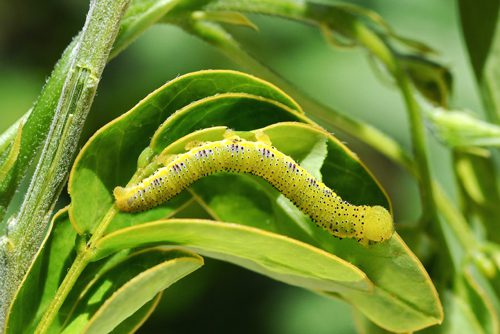
When a caterpillar is not defending itself, it is most likely engaged in its favorite pastime, to consume and grow, consume and grow, consume and grow some more!
There are usually 5 stages or “instars” at which the caterpillar must shed an outer layer of skin or “exoskeleton” in order to compensate for its increasing body size.
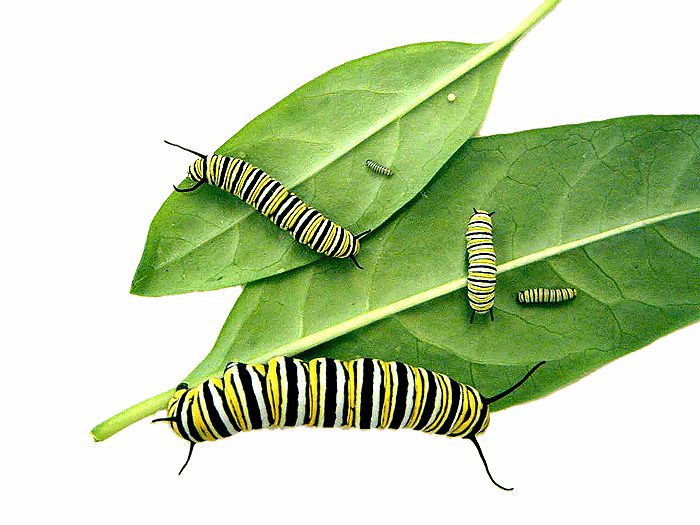
They do this molting by taking in gulps of air, then puffing out, which causes the old skin to split at a designated seam allowing the new and improved caterpillar to crawl out.
Caterpillars are truly magicians, crawling illusions. By the last instar or shedding, the caterpillar is ready to perform its final trick, to transform entirely and take on the new identity of a chrysalis. . .
Master magician, munching to and fro, a caterpillar works illusions til’ the end of his show ~K. D’Angelo

